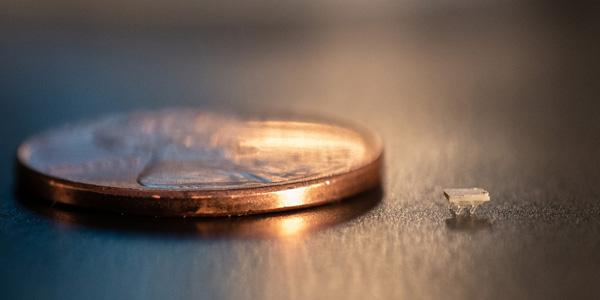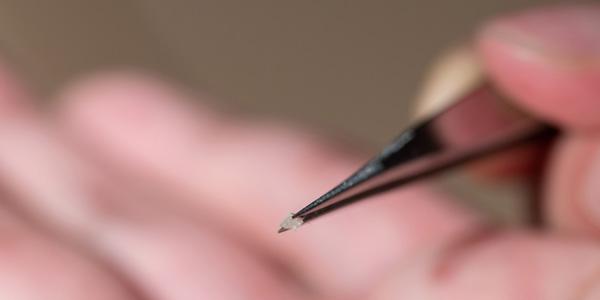Ant-Sized Robots Powered by Tiny Vibrations
Researchers at the Georgia Institute of Technology have created a new type of tiny 3D-printed robot that moves by harnessing the vibration from piezoelectric actuators, ultrasound sources or even tiny speakers.
The size of the world’s smallest ant, these “micro-bristle-bots” could sense changes in the environment and swarm together to move materials—or perhaps one day repair injuries inside the human body.
Prototypes of the robot respond to different vibration frequencies depending on their configurations, which allows researchers to control individual bots by adjusting the vibration. Though they are only 2 millimeters long, the bots can cover four times their own length in a second.
The micro-bristle-bots consist of a piezoelectric actuator glued onto a polymer body that is 3D printed using two-photon polymerization lithography (TPP). The actuator generates vibration and is powered externally. No batteries are small enough to fit onto the bot. The vibrations can also come from a piezoelectric shaker beneath the surface on which the robots move, from an ultrasound/sonar source or even from a tiny acoustic speaker.
The vibrations move the springy legs up and down, driving the microbot forward. Each robot can be designed to respond to different vibration frequencies depending on leg size, diameter, design and overall geometry. The amplitude of the vibrations controls the speed at which the micro-bots move.
The team of researchers including Azadeh Ansari, an assistant professor in the School of Electrical and Computer Engineering at the Georgia Institute of Technology, Jun Ueda, associate professor at the George W. Woodruff School of Mechanical Engineering, and graduate students DeaGyu Kim and Zhijian (Chris) Hao, have built a “playground” in which multiple microbots can move around as the team learns more about what the bots can do. They are also interested in developing microbots that can jump and swim.
A paper describing the micro-bristle-bots has been accepted for publication in the Journal of Micromechanics and Microengineering. The research was supported by a seed grant from Georgia Tech’s Institute for Electronics and Nanotechnology.







Comments